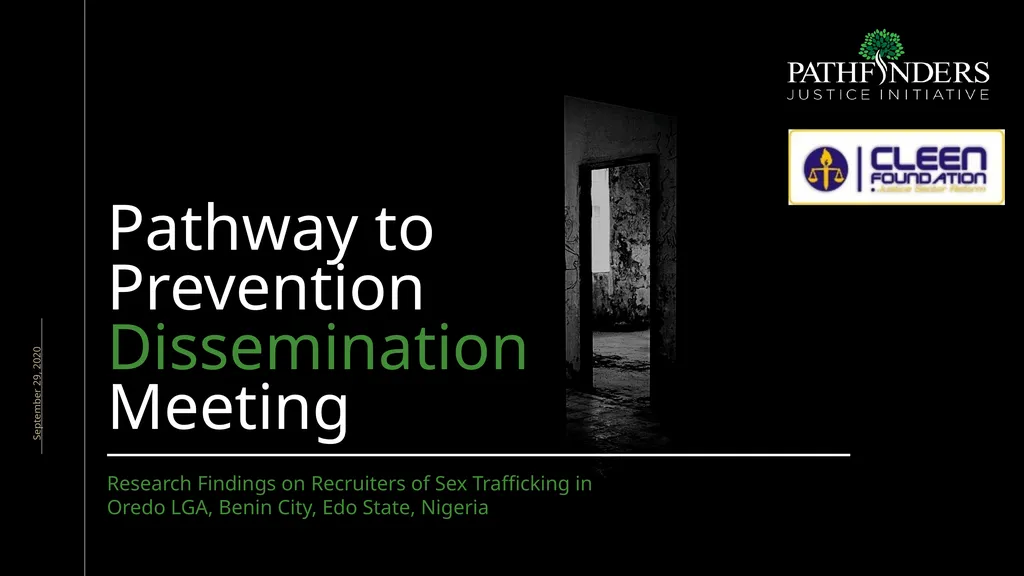
Pathway to Prevention Dissemination Meeting
Author: liane-varnes | Published: 2025-07-16
Description: Pathway to Prevention Dissemination Meeting Research Findings on Recruiters of Sex Trafficking in Oredo LGA, Benin City, Edo State, Nigeria September 29, 2020 Powered by: 02 Powered by: 03 Our Agenda Our Agenda Welcome Goals for the
Download Presentation
Download the PPT/PDF: Download
Transcript:
Loading transcript…